I did a photo excursion yesterday with friends and fellow photographers, Julie and Stewart Hamilton. We went to a familiar location, the area around Mount Engadine Lodge, 37 km (23 miles) south of Canmore on the Spray Lakes Road. Although I visit the area frequently in summer, this was the first time I had gone there to photograph in winter.
We had two pleasant surprises; the crisp, clean white snow and the spectacular light. At an altitude of 1,844 metres (6,050 ft), the area is a little more wintery than Canmore and it’s far enough away to have different weather. The overcast skies in Canmore changed to broken clouds, blue sky and soft winter light.
Upon arrival, we donned our snowshoes and hiked down to the expansive marsh below the lodge. The marsh is more accessible in winter, with the creeks frozen over and a solid base of snow atop the marshy terrain beneath. One objective was to find some open water in Smuts Creek, the main waterway passing through this area.
My first picture is a good example of what we experienced. I like this photograph for the blue of the sky, the wispy clouds, snow-covered Mount Chester in the background, the shadows on the snow and the clear, still water reflecting the mountains. We couldn’t ask for much more.
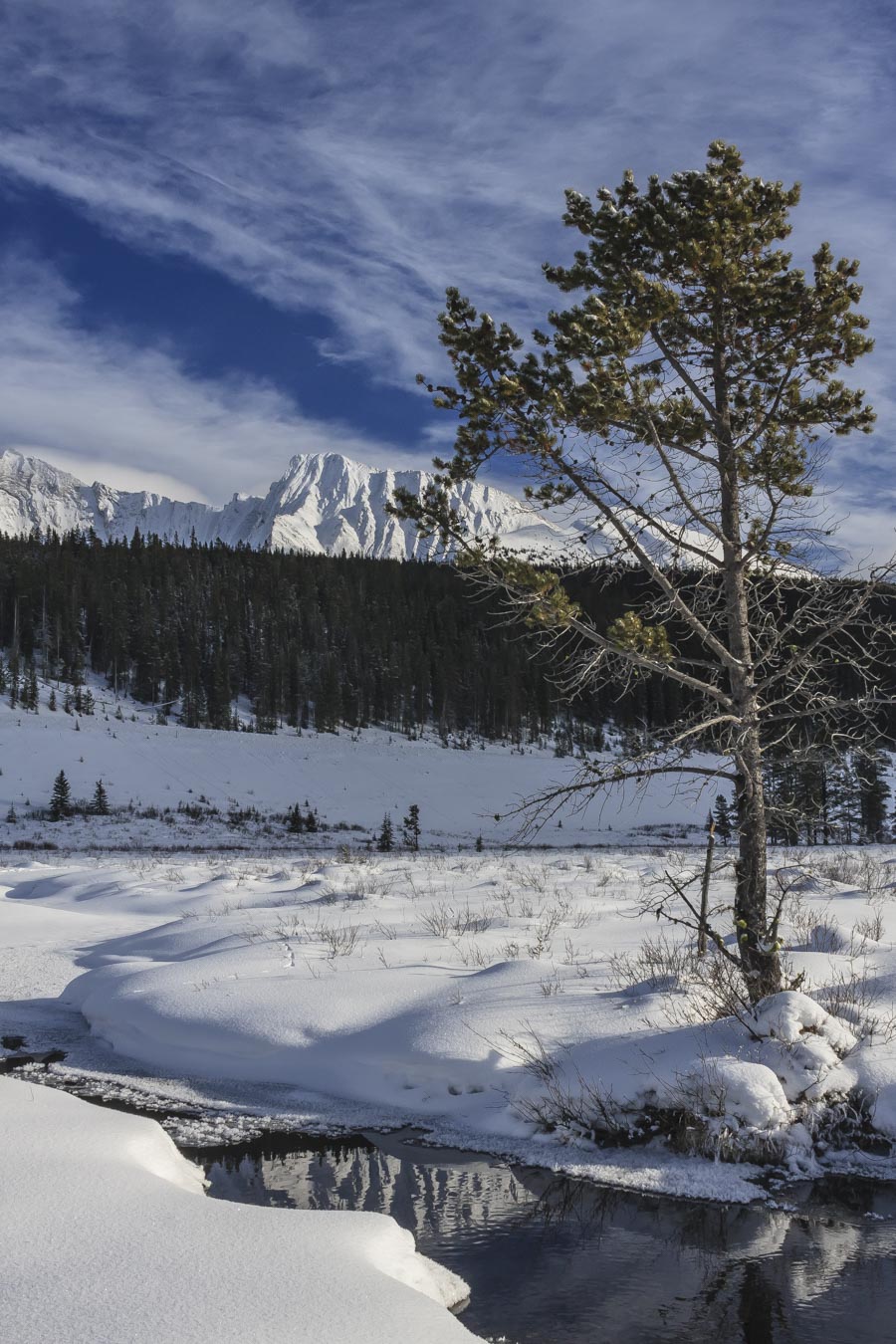
Conditions were variable through the course of our sojourn, with the sun disappearing intermittently behind cloud cover. This created some interesting light challenges, large areas of the landscape in shadow with other areas in brilliant sunlight. My next picture illustrates the extreme contrast between the marsh area in the foreground and the gleaming, Mount Nestor in the distance.
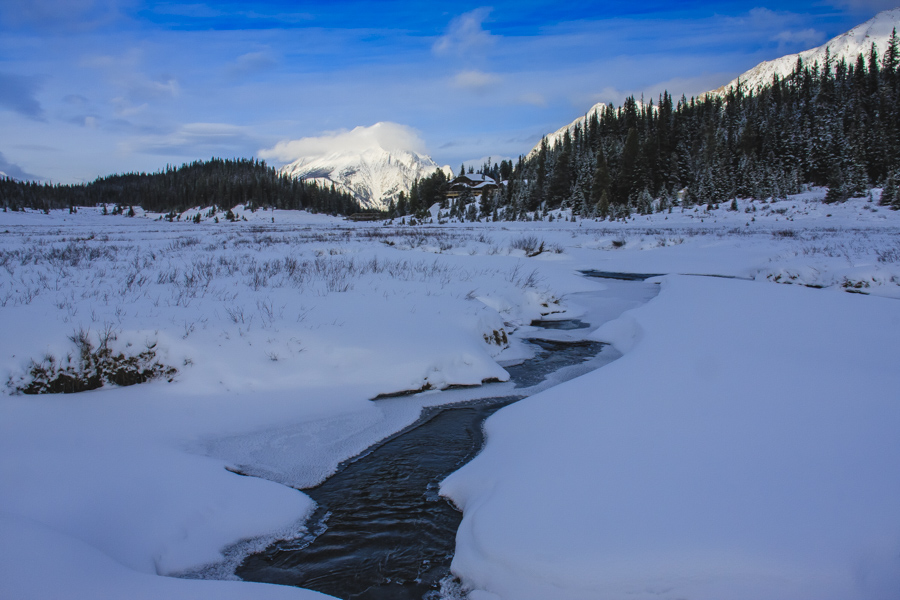
At times the sun was poking through the clouds, creating a patchwork of light across the scene. Following is an image where I’ve captured some interesting variations in the light. The sun is shining over the clouds to illuminate (l-r) Mount Nestor, Buller Mountain and Mount Engadine.
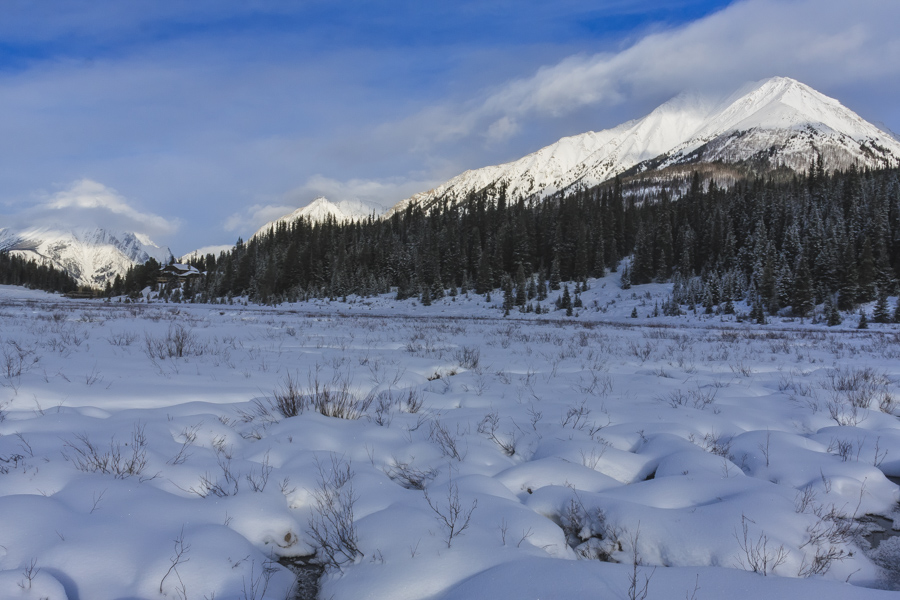
I tried a few shots in the direction of the sun as well, with generally pleasing results. Following are two versions of the same image, one in colour; the other in black and white. I was attracted by the snow blowing off the summit of Mount Birdwood. The sun is just out of the picture on the left, illuminating the blowing snow and a slim facet of the mountain. The rest of the scene is backlit, lightened a little with the software. I think this scene works well in black and white and would be my preferred one of the two.
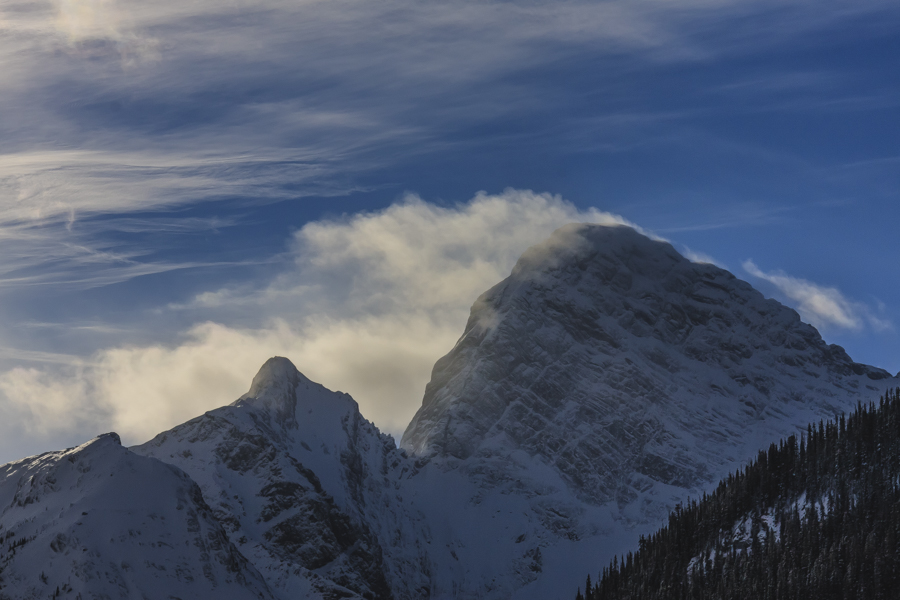
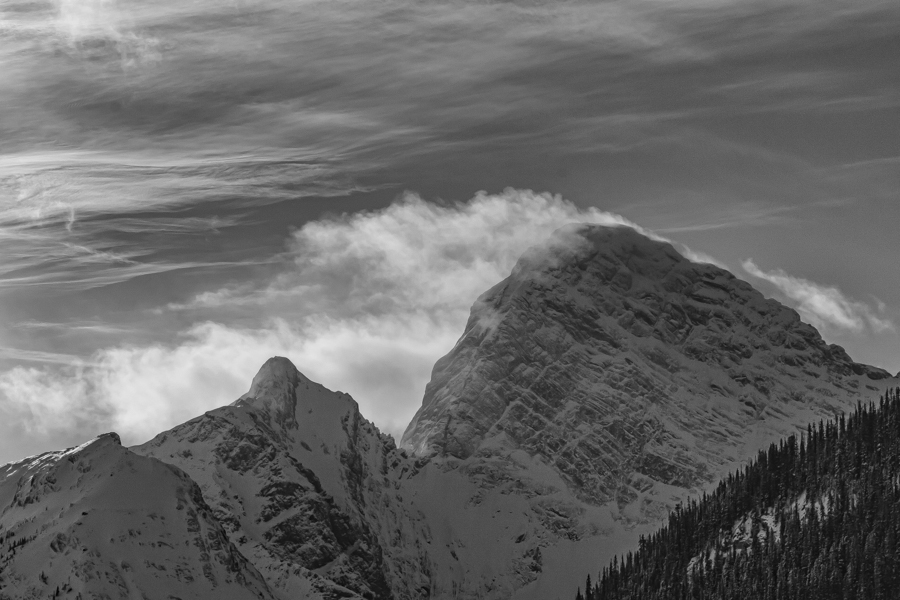
Yesterday was the first time I had seen the Mount Engadine Lodge from this position and took the opportunity to photograph it. This picture features a great example of compression distortion, the apparent proximity of Mount Nestor in the background. It is actually a little over 10 km distant (~6 miles). This form of distortion is created using a long focal length lens (in this case 200 mm). Distant objects look approximately the same size, when in reality closer objects are very small compared to the more distant object. Hence, the viewer cannot discern relative distances between distant objects-distances are compressed.

I conclude today’s post with some close-up shots I took to capture some of the fine detail in the snow and ice. The first is a simple shot of some very small snowdrifts. With the sun low in the sky at this time of the year, they create prominent shadows.
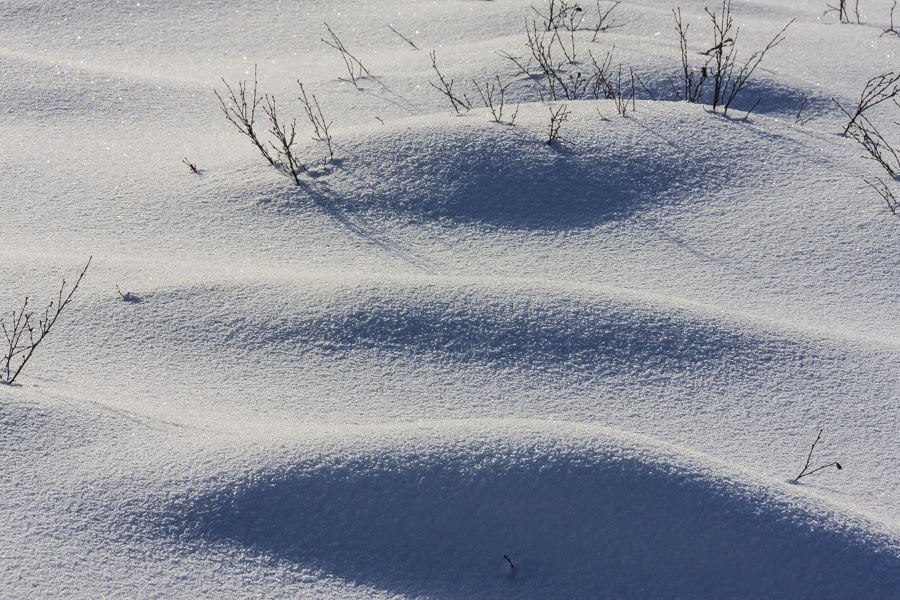
This final picture shows some water in three forms; snow, ice and liquid water. It actually makes an appealing image, with the snowflake detail, the patterns in the ice (polished by the moving water), the rippling of the flowing water and the coloured stones on the creek bed.
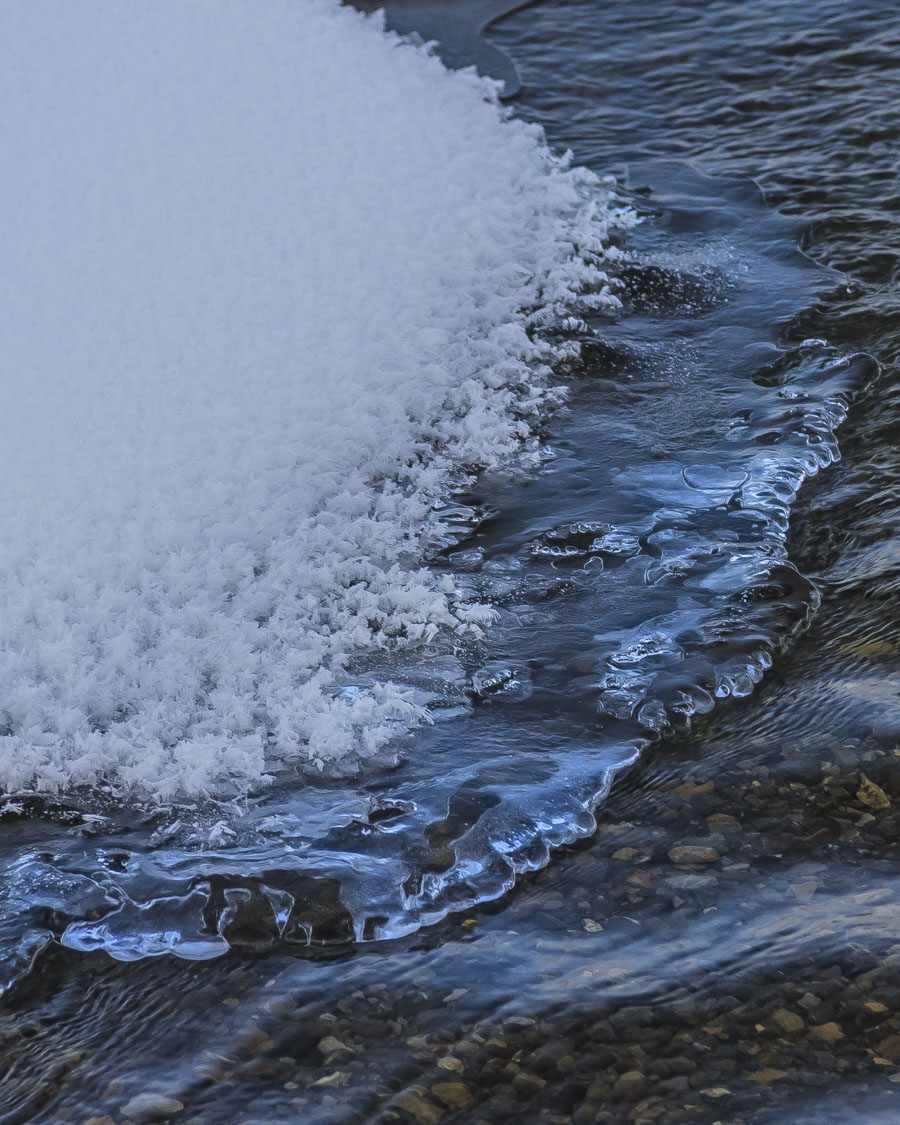
It’s nice to conclude a photo shoot with a few good pictures. But it doesn’t compare to the experience of being outdoors on a crisp winter day, surrounded by nature at its finest.

Nice work, Peter. You worked the light very well and captured the essence of this wonderful place perfectly.
Wonderful photos. Thanks for sharing them.
Happy New Year!
Very nice work. Looking forward to seeing more.